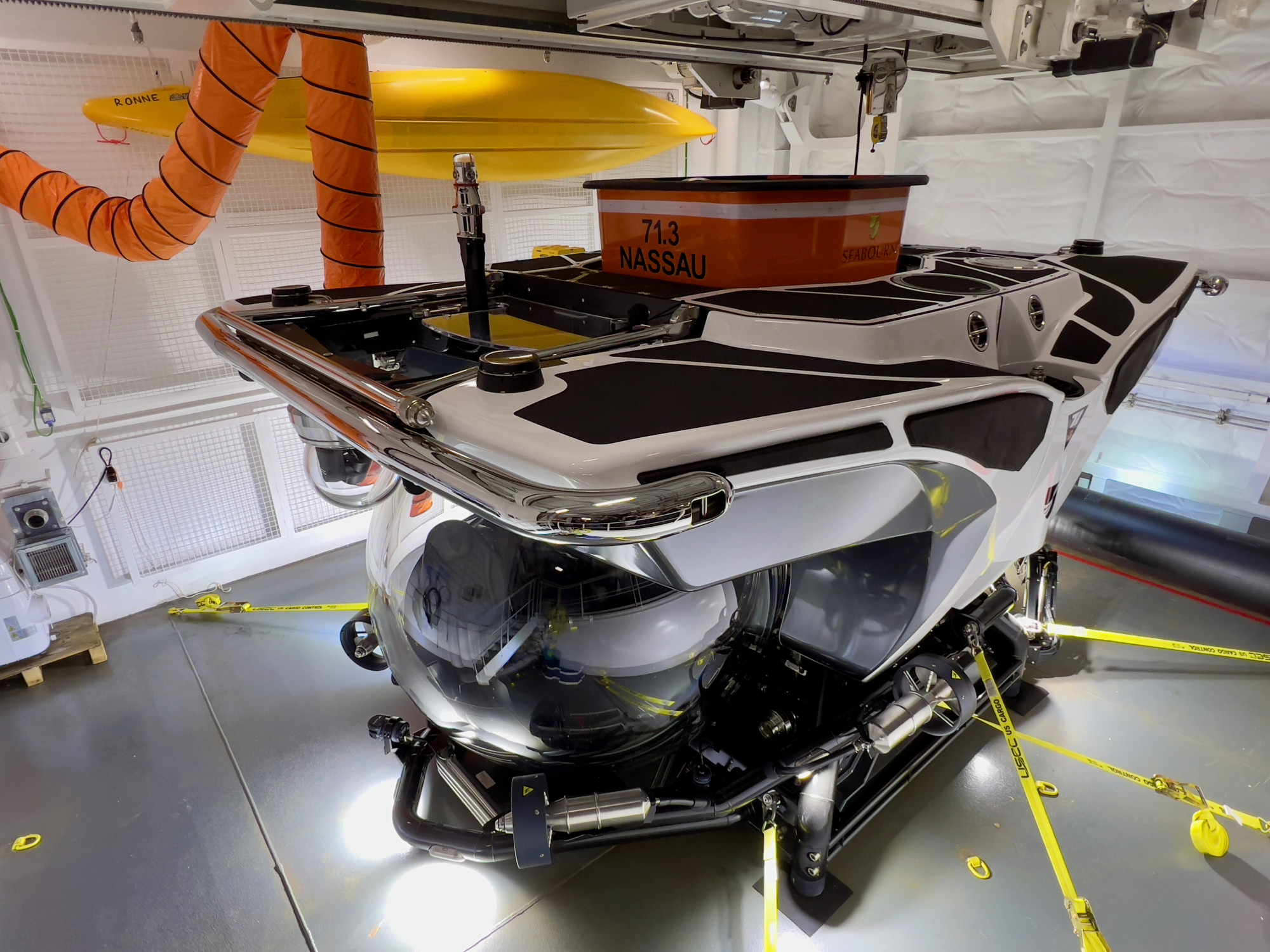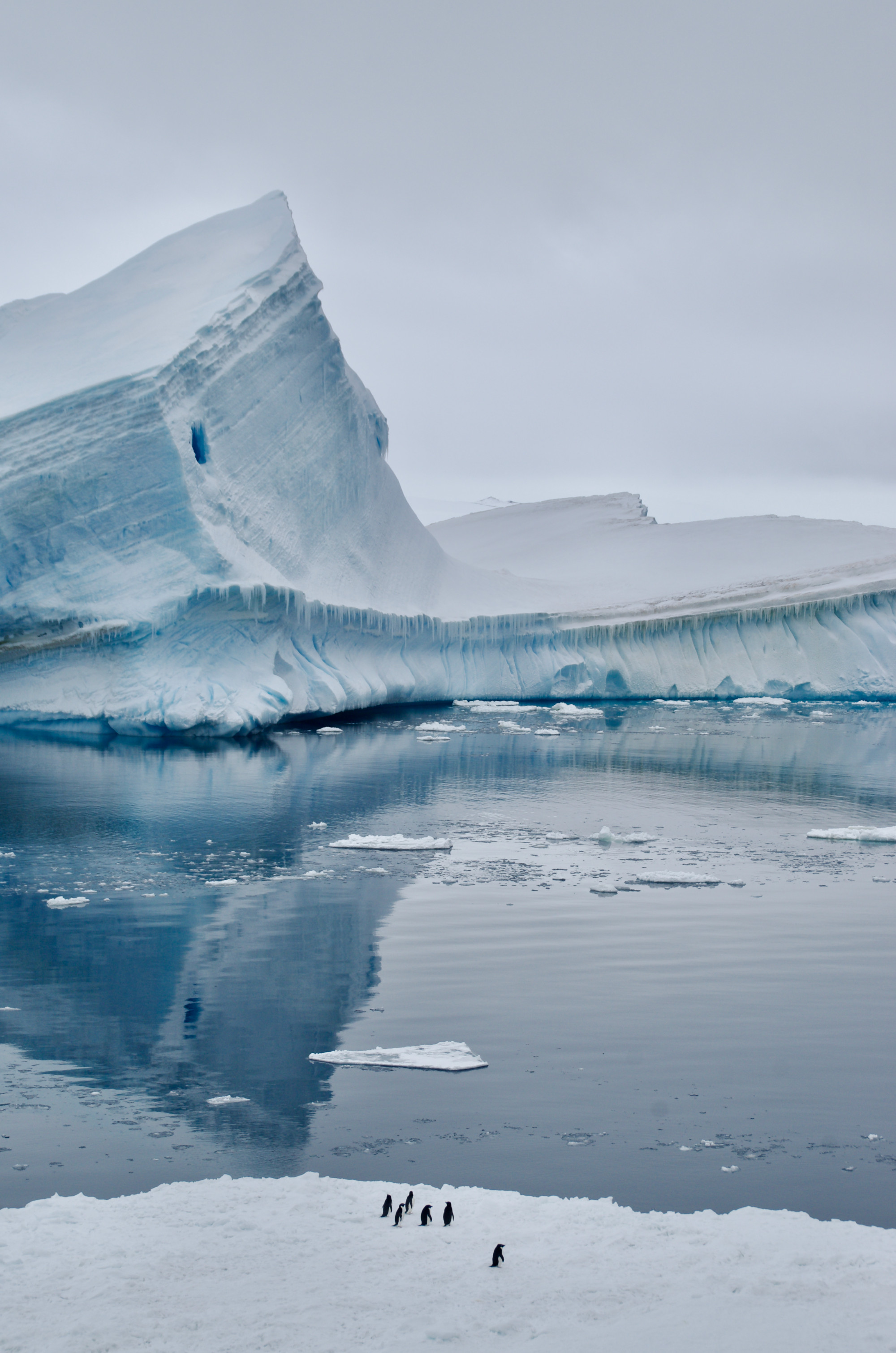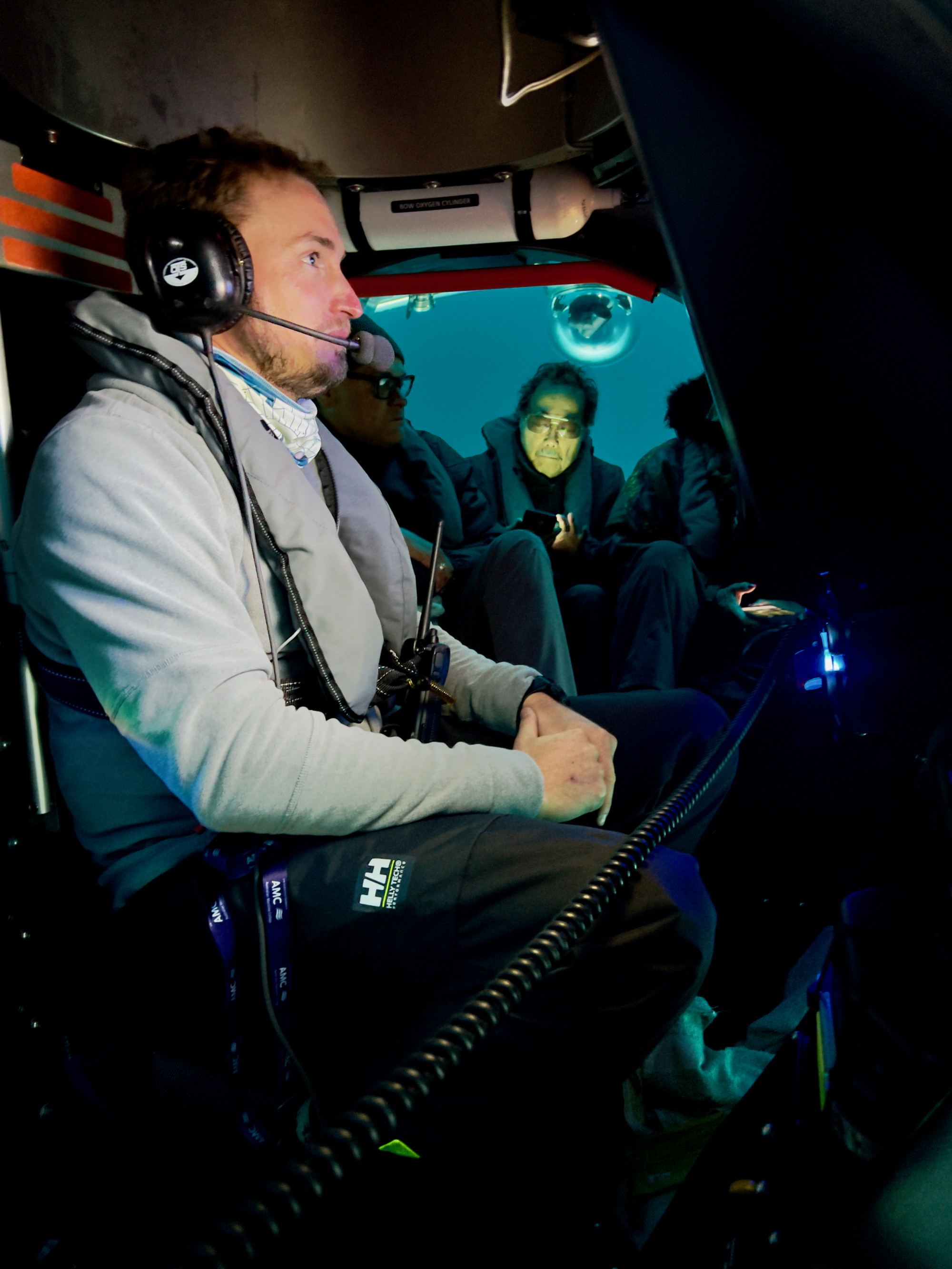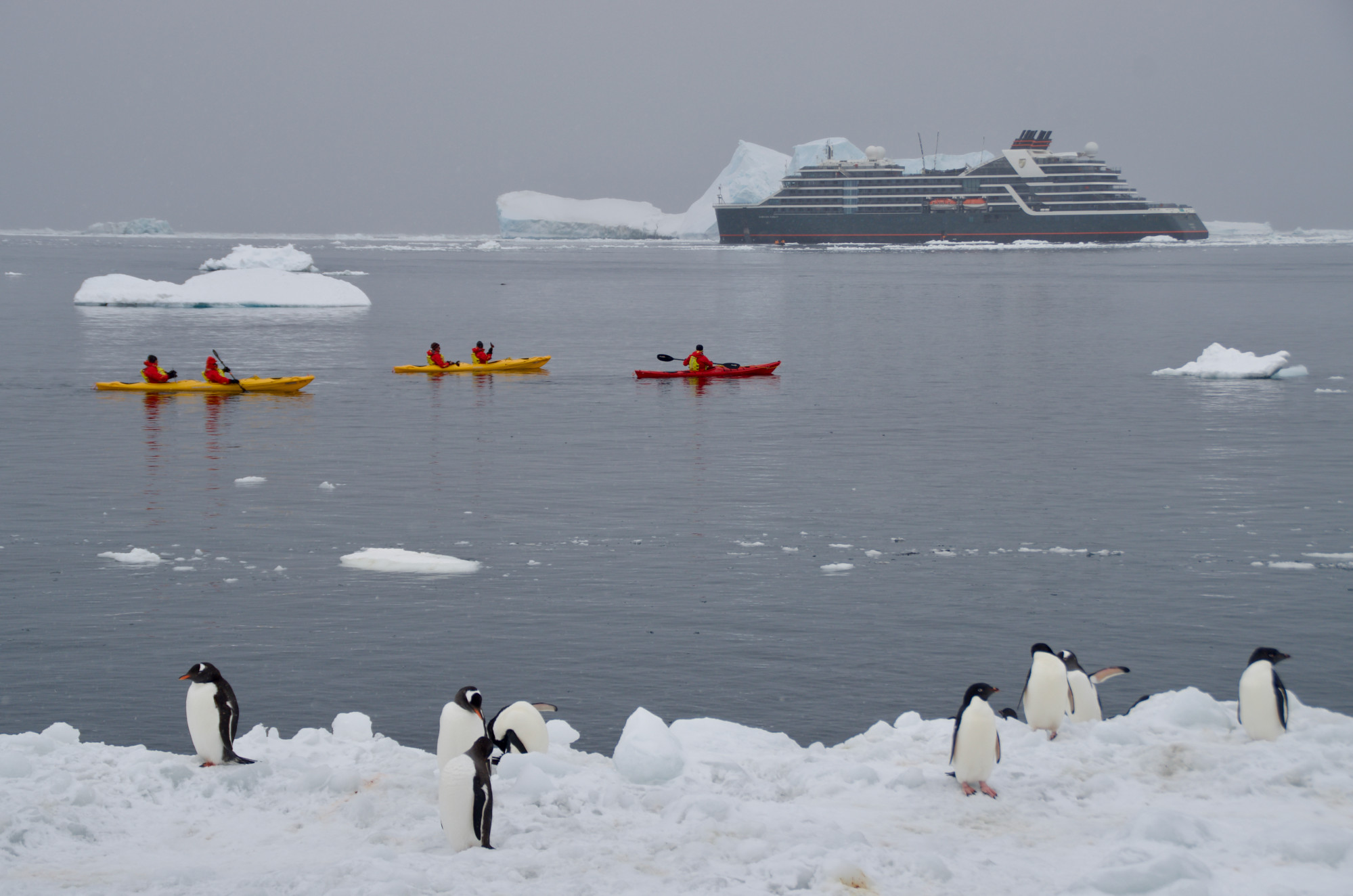
Ice and a slice of luxury: Antarctic cruise includes a deep dive with champagne in a submersible
- Visitors to Antarctica have to follow increasingly strict rules to safeguard the wildlife, but travellers can still explore the frozen continent in style
- Post Magazine takes a trip on the Seabourn Pursuit, a luxury cruiser equipped with Zodiac inflatables and two submersibles
Now I know what it feels like to be a goldfish.
I’m sitting in one of the twin bulbous eyes of a submersible, the great globe of centimetres-thick Perspex so transparent it needs a gentle touch with the tips of the fingers to be sure it’s there at all.
Each eye contains three swivel chairs with panoramic views of the sea floor, and because this submersible is one of two belonging to the 264-passenger Seabourn Pursuit, one of the newest vessels in Antarctic waters, the chairs are leather-covered and there’s a champagne cooler on board.
We may be in one of the world’s most remote and inhospitable wildernesses, and now 85 metres (280ft) below the surface of a freezing ocean, but we are determined to be civilised.

The beams of the multimillion-dollar vessel’s spotlights are filled with motes like those at a theatre, only ones that wriggle.
On the seafloor’s sandy stage, they pick out starfish and their close relatives – wiry, brittle invertebrates, connected in myriad numbers arm to arm, spreading across the sea floor in a lacy net.
The soupy waters are teeming with tiny life, and an ice fish swims lazily into view, its long mouth giving it a morose air. Its translucent, haemoglobin-free body is topped by beady black eyes that peer into the bowl we occupy and reflect our own curiosity.
Private jets and glamping: the evolution of the US Burning Man festival
If the fish has never seen our like, no human, the pilot points out, has ever seen this spot before either.
A more typical Antarctic experience is far less calm, and involves sitting on the side of a Zodiac inflatable rubber boat – which is like a giant, motorised truck tyre – inches above seas chilly enough to kill in minutes. We weave through sea ice and icebergs, wearing as many layers as possible beneath the state-of-the-art insulated jackets provided.
On the two-day crossing of the Drake Passage, which separates South America’s Cape Horn from the South Shetland Islands of Antarctica, we attended compulsory lectures and watched in-room videos on Zodiac safety, submersible and kayak operations, interactions with wildlife, biosecurity and a long list of the very tight self-imposed restrictions under which tourism on the frozen continent operates, to preserve the environment. (Attendance is diligently checked, and the in-room television knows if videos have been watched. Any passenger failing to participate fully will be denied permission to land.)
But no lectures can fully prepare passengers for the experience of grounding on snow-covered rocky beaches and climbing up steps hacked into the ice by the Seabourn Pursuit’s advance party, to find innumerable penguins that dot the slopes beyond and make the skyline bristle with their silhouettes.

The air is filled with the vast murmuring and ululation of thousands of birds with something to say. They greet some neighbours, warn others away from their painstakingly assembled pebble nests, or defy hovering, sharp-billed skuas hoping for a snack of regurgitated krill, an incautiously exposed egg, or, later in the season, a chick.
These are the beguiling brush-tailed penguin species: the Adélie; the gentoo, with its distinctive white patches above the eyes; and the chinstrap, named for the narrow line of black running underneath its beak, appearing to keep a cap of black feathers on its head.
Much of the continent’s wildlife sees so few humans that birds and beasts are largely indifferent to their presence. But the rules require human visitors to be rather less indifferent, to stay five metres away from all penguins and to retreat from their curiosity if necessary.
Even sitting down without specific permission from a guide who is satisfied that the proposed spot is nowhere near nesting sites or penguin highways is forbidden.

With fur seals, the safe distance is 15 metres, but no one hissed at by a forbidding mountain of carpet with flippers needs a second warning. Relatives of the sea lion, these bulky beasts, seen basking in the Antarctic summer sleet, can suddenly tower up menacingly on muscular front flippers, and can easily outrun a human.
On land, the penguins’ motion is an ungainly and comical clockwork, but in the water they are transformed into something mercurial, more fish than bird, porpoising their way at speed across vast, berg-dotted bays that are both playground and larder.
In between, they jostle on springboards of ice, created by the sea rubbing away at the underside of glacier noses, exhorting each other to be the first to take a dive, before one decides it’s safe and the rest follow, their black-and-white silhouettes toppling over one after the other like dominoes.
But even empty, the landscape would be epic.

I take the submersible dive near Deception Island, in the South Shetlands, the ship having sailed spectacularly through a narrow opening called Neptune’s Bellows into the interior of the flooded caldera of a still active, mostly undersea volcano.
The shoreline is studded with rusting red circular tanks that once held whale oil, and the huts of a long-abandoned whaling settlement, now twisted out of shape by land movements, looking like wooden caterpillars.
But from then on, heading south in the calm waters between the Antarctic Peninsula’s west coast and assorted islands, there’s little sign of human presence.
Even today, only about 50 ships operate in these waters, including intrepid sailing vessels, and the slender finger of the peninsula, reaching up as if to touch the southern tip of Argentina, although a mere fraction of the total continent, is still vast enough for there to be few mutual sightings.

Visitors are limited to about 30 sites, each allowing no more than two ship landings a day, and no more than 100 people on land at a time. The penguins at these locations seem to do better than at others, the skuas are more frightened of humans than the penguins are.
We climb hills for views of great glaciers lying at steep angles, their tops crossed with fissures, like slices tumbling out of a newly opened loaf, but in decades-long slow motion.
The compression of layer upon layer of snow over centuries squeezes out air bubbles, leaving cliffs of ice that appear to glow from inside with a cobalt-blue light.
The ship may have a captain, on an often open-to-passengers and ultra hi-tech bridge, and the expedition may have a leader – an ebullient and agreeable Argentinian with a dry sense of humour – but it’s the weather that’s in command.

Plans announced at evening briefings have often been torn up by morning, as the instruments indicate meteorological changes. It doesn’t matter. All landings and Zodiac cruises are spectacular.
The Seabourn Pursuit can shove its way through first-year sea ice – perfectly flat and brilliant white portions of frozen sea like vast slabs of royal icing lifted from some giant’s Christmas cake. But second-year sea ice is too dense, and the spiky icebergs that have calved from glaciers and the towering flat-topped tabular bergs that have broken off from ice shelves, some the size of city blocks, are to be avoided.
The great blankets of pure whiteness inevitably lead to thoughts of conserving their purity. The measures taken to reduce environmental impact, to prevent the arrival of invasive species and to avoid the transmission of bird flu to the continent’s vast colonies are extraordinary.
They have become stricter, as I’ve seen in three visits over 20 years. There’s a perpetual scrubbing, rinsing and sterilising of anything that touches ground.
On one occasion we diligently circle back in our Zodiac to retrieve a dropped glove. Its loss would have required a pollution incident report to the Antarctic authorities, and would have been a major black mark for Seabourn.

The Pursuit’s on-board generators use the lowest-sulphur fuel, and run permanently at their most efficient speed to generate electricity for twin external electric propulsion units. This reduces fuel consumption by up to 20 per cent, and cuts down underwater noise.
It is thought that even anchoring will soon be forbidden, but the Seabourn Pursuit already complies, an automatic pilot swivelling the power units and providing pushes from the three bow thrusters as needed.
Seabourn has managed to pack the comforts of the vast floating palaces now forbidden in Antarctic waters into a far more compact vessel – restaurants, bars, swimming pool, hot tubs, library, games room, spa and all.
And somehow, over an afternoon tea with groaning cake stands that would shame many a grande dame of a hotel on land, or a glass of Châteauneuf-du-Pape with a tasting menu, the contrast between the domesticity of the meal and the wilderness outside the windows enhances both. And the snowiness of the table linen seems to link them.
Here, Antarctic travel, still in its relative infancy, and only undertaken by relatively tiny numbers, has come of age.

